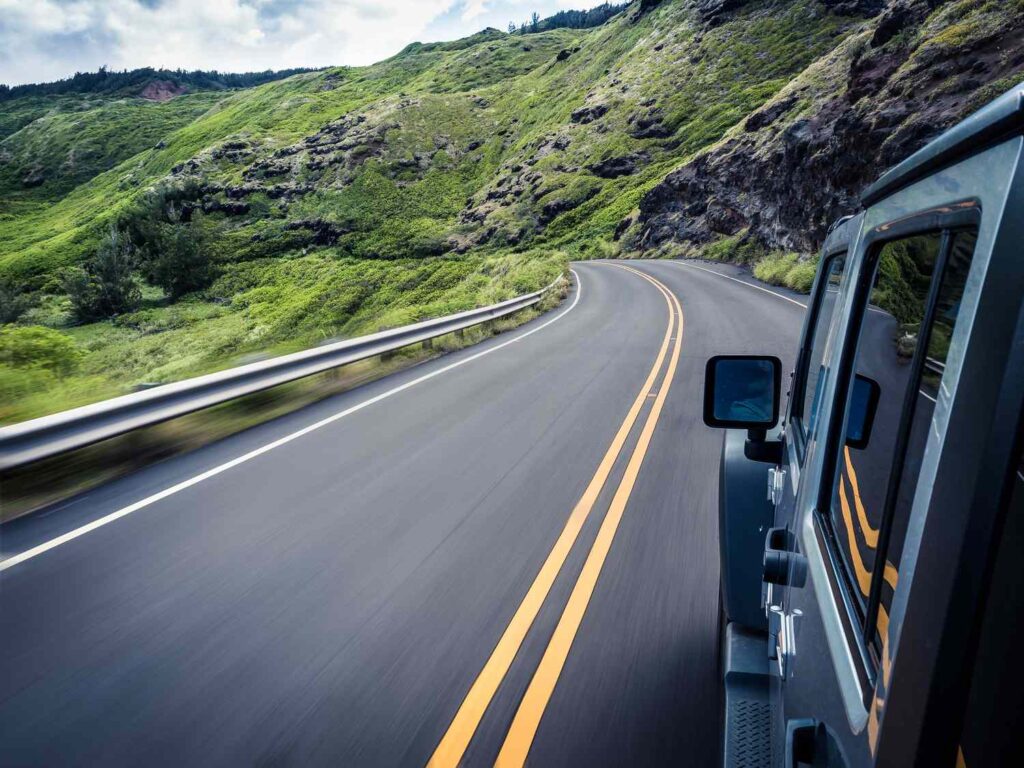Introduction of Auto Safety
As summer approaches with its sunny days and increased road trips, ensuring your vehicle is safe is more important than ever. This guide provides seven essential tips about Auto Safety to keep you, your passengers, and your car ready for every journey, tailored for the warm weather ahead. We’ll also include resources to check road conditions across Canada, helping you plan safer drives.
Vehicle Maintenance Tips
Tire Inspections: Summer heat can increase the risk of tire blowouts. Check tire pressure when cold, using a gauge against your car’s manual recommendations, and inspect tread depth with a penny (if Lincoln’s head is visible, replace the tire). Rotate tires every 6,000–8,000 miles and consider summer-specific tires for hot areas. NHTSA reports approximately 11,000 tire-related crashes annually in the U.S., emphasizing the need for regular checks. Before heading out, use DriveBC for British Columbia or 511 Alberta for Alberta to check road conditions that could affect tires.
Brake Maintenance: Brake issues account for about 22% of crashes caused by faulty vehicle parts, according to NHTSA. Listen for squealing or grinding, inspect pads (replace if less than 1/4 inch thick), and check fluid levels. Test brakes at low speeds and get professional inspections every 12,000 miles or yearly. Use Ontario 511 for real-time traffic updates in Ontario to anticipate heavy traffic needing reliable braking.

Additional Safety Measures
Visibility and Comfort: Keep your windshield and wipers clear for summer glare and rain, using a glass cleaner and replacing worn blades. Top off washer fluid with a summer formula and consider Rain-X for better visibility. Check The Weather Network for weather updates. Ensure your AC works to prevent heatstroke, testing it on max cool and addressing issues like low refrigerant.
Emergency Preparedness: Pack an emergency kit with first-aid supplies, water, snacks, and tools like jumper cables. Include summer essentials like sunscreen. Check Manitoba 511 for road closures in Manitoba to avoid remote breakdowns.
Driving Habits: Drive defensively with a three-second following distance, avoiding distractions like texting. Watch for pedestrians and cyclists, and pull over if tired. Use Québec 511 for road conditions in Québec to plan safer routes.
Modern Safety Features: Use features like automatic emergency braking and lane departure warnings, ensuring sensors are clean. Test backup cameras and heed TPMS warnings. Before long trips, check Saskatchewan Highway Hotline for roadwork updates to complement these features.

Survey Note: Comprehensive Analysis of Auto Safety Tips for Summer Driving
As of 11:58 AM PDT on Thursday, May 1, 2025, with summer and sunny days ahead, ensuring auto safety is paramount for enjoying road trips and daily commutes. This comprehensive survey note expands on the direct answer, providing a detailed exploration of seven must-know auto safety tips, incorporating statistics, and integrating resources for checking road conditions across Canada. The content is tailored for publishing on the UBZ website, aiming to engage readers with practical, season-specific advice.

Background and Context
Summer brings increased road traffic due to vacationers, teens on break, and construction zones, heightening the risk of accidents. Vehicle maintenance and safe driving practices are critical to mitigate these risks, especially under the strain of hot weather. Research from the National Highway Traffic Safety Administration (NHTSA) highlights the significance of tire and brake maintenance, with statistics underscoring their impact on crash rates. This note integrates these findings, ensuring readers are equipped with actionable insights for safer summer driving.
Detailed Safety Tips with Statistics and Resources
1. Inspect Your Tires for Summer Conditions
Tire-related crashes pose a significant safety concern, with NHTSA reporting approximately 11,000 tire-related crashes annually in the United States, as noted in a 2024 article from Utires.com (Tire Blowout Statistics + Safety Tips). Summer heat exacerbates tire issues, increasing blowout risks due to hot pavement and long drives. To mitigate this:
- Pressure Check: Check tire pressure when cold using a reliable gauge, comparing it to your car’s manual or door jamb recommendations. Summer heat may naturally raise pressure, but don’t exceed the sidewall maximum. Underinflated tires overheat and wear unevenly, while overinflated ones reduce traction.
- Tread Inspection: Use the penny test, place a penny in the tread with Lincoln’s head down; if visible, replace the tire. Look for cracks, bulges, or uneven wear, which may indicate alignment issues. Rotate tires every 6,000–8,000 miles for even wear, and consider summer-specific tires for hot climates, designed for higher temperature resilience.
- Spare Tire Readiness: Ensure the spare is inflated, and keep your jack and lug wrench accessible. Before trips, check road conditions using DriveBC for British Columbia or 511 Alberta for Alberta, which provide real-time updates on construction or rough pavement affecting tires.
This proactive approach can prevent dangerous breakdowns, especially under the blazing summer sun.
2. Maintain Your Brakes for Quick Stops
Brake-related problems are a leading cause of accidents due to vehicle defects, with NHTSA data indicating they account for about 22% of crashes caused by faulty parts, as per a 2021 article from Automotive Fleet (Over 20% of Collisions Linked to Bad Brakes). Given summer’s increased traffic, reliable brakes are essential:
- Warning Signs: Listen for squealing, grinding, or a spongy pedal, indicating worn pads, low fluid, or other issues. Visually inspect pads through wheel spokes; replace if less than 1/4 inch thick. Check fluid levels in the reservoir, topping off with the correct type if low, but seek professional help for leaks.
- Testing and Inspections: Test brakes at low speeds in a safe area; if the car pulls or the pedal vibrates, have rotors and calipers inspected. Experts recommend professional checks every 12,000 miles or annually, especially before summer trips. Use Ontario 511 for real-time traffic and road closure info in Ontario to anticipate heavy traffic needing robust braking.
Regular maintenance ensures confidence in handling busy roads or sudden stops, reducing the risk of collisions.
3. Keep Your Windshield and Wipers Crystal Clear
Visibility is critical, especially with summer’s bright glare, sudden rain, and bug splatter. A dirty windshield or worn wipers can obscure your view, slowing reaction times:
- Cleaning and Maintenance: Clean the windshield inside and out with a glass cleaner and microfiber cloth to reduce glare. Check wiper blades for cracks or stiffness, as summer heat degrades rubber. Replace if they streak or skip, using blades designed for your vehicle; most last 6–12 months, so swap before summer. Top off washer fluid with a summer formula for bugs and grime.
- Enhancements: Consider Rain-X for water-repellent treatment, improving visibility in storms. Don’t overlook the rear windshield and ensure mirrors are clean and adjusted. Use The Weather Network for weather maps and highway conditions to prepare for rain or poor visibility, ensuring a clear view in all directions.
This tip is vital for navigating summer road hazards safely.

4. Stay Cool with a Reliable AC System
A functioning AC isn’t just for comfort; it’s a safety essential. Overheating can lead to fatigue, distraction, or heatstroke, impairing driving:
- Testing and Maintenance: Test your AC on max cool; it should blow cold (35–45°F at vents) within a minute. If weak, check the cabin air filter behind the glovebox or dashboard; replace if clogged. Low refrigerant is common; check for leaks (look for oily residue around hoses or compressor) and recharge if needed, but leaks require professional fixing. Ensure the condenser is debris-free to maintain efficiency.
- Regular Use: Run AC for 10 minutes every few weeks, even in cooler weather, to keep seals lubricated and prevent compressor issues. A cool cabin keeps you alert, especially on long summer drives, enhancing safety.
This ensures you stay focused and comfortable, reducing heat-related driving risks.
5. Pack an Emergency Kit for Roadside Safety
Summer road trips can take you far from help, making an emergency kit essential for breakdowns or accidents:
- Kit Essentials: Include a first-aid kit, flashlight with extra batteries, reflective triangles or flares, a multi-tool, tire repair kit with a portable compressor, fire extinguisher, jumper cables, and basic tools. For summer, add water (at least a gallon per person), non-perishable snacks, sunscreen, and a hat to protect against heatstroke if stranded.
- Preparation: Store the kit in your trunk, checking it before trips for expired items. Add toys, diapers, or pet food if traveling with kids or pets. A charged phone and portable charger are critical for help. Check Manitoba 511 for road closures or construction in Manitoba to avoid remote areas, turning potential crises into manageable hiccups.
This preparation ensures you’re ready for unexpected situations, enhancing safety on long summer journeys.
6. Drive Defensively to Handle Summer Traffic
Summer brings more drivers—vacationers, teens, and construction crews—making defensive driving key to staying safe:
- Safe Practices: Maintain a three-second following distance, increasing in heavy traffic or bad weather. Scan ahead for brake lights, erratic drivers, or roadwork. Avoid distractions like texting, eating, or adjusting the radio; set up GPS before driving. Be cautious at intersections, watching for pedestrians and cyclists, common in warm weather. Pull over if tired or overheated.
- Resource Use: Use Québec 511 to monitor road conditions and traffic incidents in Québec, helping plan safer routes. Defensive driving means staying calm, alert, and ready for anything, reducing collision risks in busy summer traffic.
This approach enhances safety amidst increased road activity.
7. Leverage Modern Safety Features
Modern vehicles offer advanced safety technologies that can save lives if used correctly:
- Feature Familiarity: Familiarize yourself with automatic emergency braking, lane departure warnings, blind-spot monitoring, and adaptive cruise control. Check the manual to ensure they’re active, cleaning sensors and cameras regularly to prevent impairment by dirt or bugs. Test backup cameras and parking sensors in a safe area, and heed tire pressure monitoring system (TPMS) warnings.
- Balanced Use: Don’t rely solely on technology; systems like lane-keeping assist are aids, not replacements for attentive driving. Before long trips, use Saskatchewan Highway Hotline to check for roadwork or closures, ensuring safety features are backed by smart planning. Combining these with good habits creates a robust safety net for summer roads.
This tip leverages technology to enhance safety, complementing driver vigilance.
Conclusion and Practical Application
Summer’s sunny days are ideal for road trips, but they bring unique challenges. By inspecting tires, maintaining brakes, ensuring visibility, keeping AC functional, packing an emergency kit, driving defensively, and using modern safety features, you’ll be ready for any journey. Resources like DriveBC, 511 Alberta, Ontario 511, The Weather Network, Manitoba 511, Québec 511, and Saskatchewan Highway Hotline keep you informed about road conditions, aiding safer planning. Stay safe, stay cool, and make every drive a great one!
Table: Summary of Safety Tips and Resources
| Tip | Key Action | Canadian Resource | Statistic (U.S.) |
|---|---|---|---|
| Inspect Tires | Check pressure, tread, rotate every 6,000–8,000 mi | DriveBC, 511 Alberta | ~11,000 tire-related crashes annually (NHTSA) |
| Maintain Brakes | Listen for signs, inspect pads, test regularly | Ontario 511 | 22% of defect-related crashes (NHTSA) |
| Clear Windshield and Wipers | Clean, replace blades, use Rain-X | The Weather Network | – |
| Reliable AC System | Test, check filter, address refrigerant issues | – | – |
| Emergency Kit | Pack essentials, include summer items | Manitoba 511 | – |
| Defensive Driving | Maintain distance, avoid distractions | Québec 511 | – |
| Modern Safety Features | Use and maintain tech, don’t rely solely | Saskatchewan Highway Hotline | – |
This table summarizes the tips, actions, resources, and relevant statistics, enhancing readability and reference.


Leave a Reply